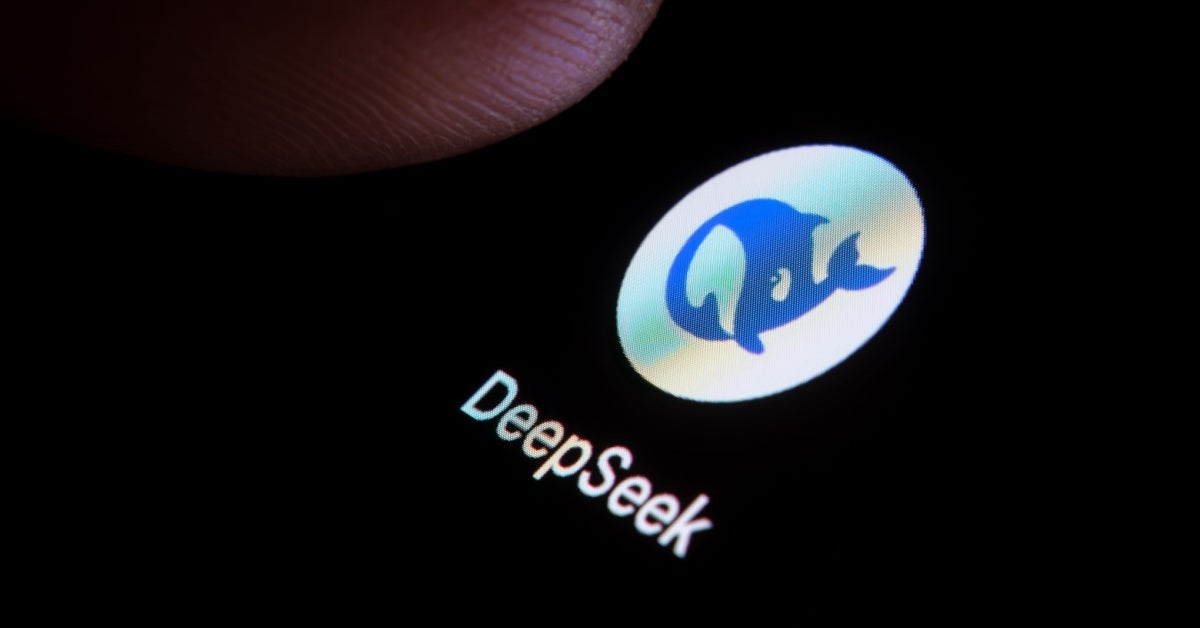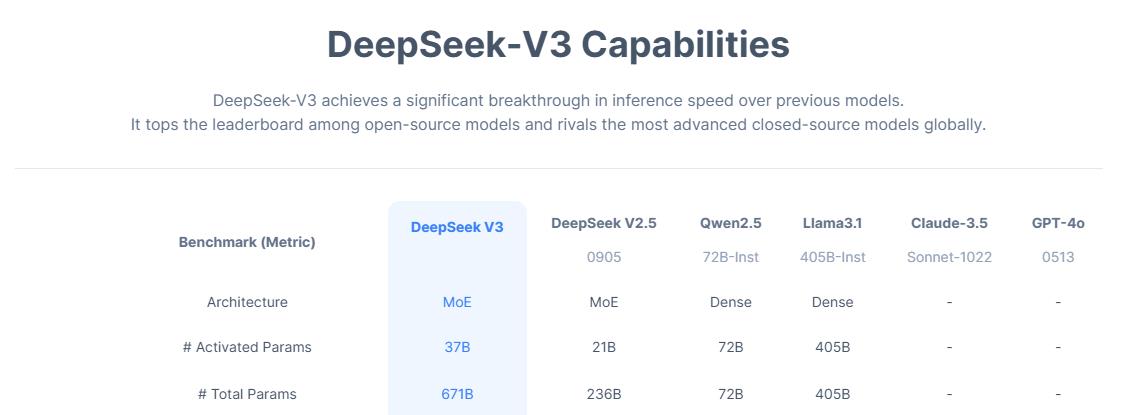Innovation has been the most significant milestone for humanity since the beginning of time. From the first wheel to the first rocket to reach space, we have pushed to be the first nations to succeed where others have faltered – to bring about a new era of change. To be human is to evolve and our rapidly changing digital landscape is only a testament to that inherent need. Artificial Intelligence (AI) has been one of the biggest technological advancements of our decade and we seem to only be at the cusp of its full potential.
Since the first AI technology came into being, countries around the world have entered a race to be the first to improve and elevate the technology. Now, we’re in a full sprint as AI becomes more accessible and advanced. In late 2022, OpenAI released ChatGPT and opened the floodgates for other AI platforms and Large Language Models (LLMs) to take center stage. Since then, companies like Google, Microsoft, Anthropic, and Meta have released their own AI chatbots and models. However, the landscape was about to shift once more with the dawn of DeepSeek.
The Chinese AI company released its DeepSeek R1 LLM on the 20th of January 2025 and within a matter of days, DeepSeek AI assistant became the top app downloaded on Apple’s App Store – almost instantly outranking OpenAI’s ChatGPT mobile app. The revolutionary new platform grabbed headlines further by costing only a fraction of what its rival platforms spent to create. DeepSeek also provided its platform under an open-source license and free usage – meaning that anyone can access its code, see how it works, and then modify it themselves.
Naturally, the sudden popularity of DeepSeek caused massive ripples across the stock market and several US-based AI companies dropped in value – including Nvidia, Microsoft, Meta, and more. In this blog article, we look into how DeepSeek has transformed the AI landscape and what it can do for users around the globe. We also look into the inherent cyber threat of AI platforms like DeepSeek and how threat actors could capitalize off these evolved technologies. For now, let’s get a better understanding of DeepSeek itself.

Sourced from Shutterstock
What Is DeepSeek?
DeepSeek is an AI development firm based in Hangzhou, China. Founded in 2023 by Liang Wenfeng, the company acts as an independent AI research lab under the umbrella of High-Flyer – a quantitative hedge fund also co-founded by Wenfeng. In November of 2023, DeepSeek released its first open-source model. Since then, the company has released several updates and variations of the original AI platform. However, it was only in 2025 that the DeepSeek R1 took root on a global scale.
The company made headlines after it topped app download charts and caused several US tech stocks to drop rapidly. DeepSeek is also a privately owned company, which means investors cannot buy shares of stock on any of the major exchanges. The DeepSeek-R1 seamlessly rivals the latest OpenAI Model o1 - and DeepSeek isn’t shy to boast about it as the company’s website banner proudly states that “DeepSeek-R1 is now live and open-source, rivaling OpenAI's Model o1.” The company goes a step further and even has a table comparing its capabilities to that of its rivals on its homepage – where, to no surprise, DeepSeek always comes out on top.

Sourced from DeepSeek
However, the platform itself can be compared to the likes of OpenAI’s platforms in terms of features and can be used for many of the same tasks. DeepSeek excels in several tasks - including mathematics and coding. Much like OpenAI’s o1 model, DeepSeek R1 is a ‘reasoning model’ that produces responses incrementally - simulating how a human would reason through problems or ideas.
One of the main points of interest with the sudden rise of DeepSeek seems to stem from its cost-efficient creation. According to the company, it took less than US$ 6 million to train DeepSeek-R1 – this is a startling fraction of the estimated hundreds of millions OpenAI alluded to using to train GPT-4. DeepSeek also uses less memory than its competitors, which further reduces the cost of performing tasks for users. The company has also found a way around US restrictions on powerful chips reaching China as DeepSeek's founder reportedly built up a store of Nvidia A100 chips in 2022.
Venture capitalist Marc Andreessen described DeepSeek as “AI’s Sputnik moment” – a reference to the Soviet satellite launch that sparked the Cold War space race. He further went on to state that DeepSeek R1 is one of the most amazing and impressive breakthroughs he’s ever seen. So, to elaborate on his assessment, let’s look at some of the main features and functions of DeepSeek.
Key Features and Functions of DeepSeek
DeepSeek functions in many ways the same as its predecessor AI models have – answering questions, drafting stories or song lyrics, solving math problems, or offering to write a dinner recipe based on what’s in the fridge. Simply put in a prompt and DeepSeek will find your results. DeepSeek also features a search option built into its chatbot. This allows users to use the platform as a web search engine. The platform can also communicate in multiple languages – but is strongest in English and Chinese.
Currently, DeepSeek has two models available: DeepSeek-V3 and DeepSeek-R1. DeepSeek-V3 is more of a general-purpose chatbot assistant that can answer various questions and perform tasks such as writing, editing, coding, and data analysis. It should be noted that DeepSeek is also limited by the inability to fact-check like its Western counterparts and may be prone to ‘hallucinations’ as well.
DeepSeek-R1, on the other hand, is the reasoning model that focuses on more complex tasks. This model is designed for step-by-step logical deductions and problem-solving – making it better at math questions and prompts that require deeper thought, which also means it will take longer to answer. While the chatbot will default to using the DeepSeek-V3 model, you can easily switch to DeepSeek-R1 by clicking the 'DeepThink (R1)' button beneath the prompt bar.
DeepSeek is free to use which means you do not need a subscription of any kind. Simply open DeepSeek.com and click “Start Now” to create an account – or use your Google account. Alternatively, you can download the DeepSeek app. However, if you want to use DeepSeek professionally and use the APIs to connect to DeepSeek for tasks like coding in the background, it will cost you. Currently, it is just US$ 0.55 per mission input tokens and US$ 2.19 per million output tokens. This compares very favorably to OpenAI's API, which costs US$ 15 and US$ 60.
In a Medium product review of DeepSeek R1, MAA1 commended DeepSeek’s thinking and reasoning output. Putting DeepSeek’s ability to think in real-time to test, he asked the platform to tell him how to build a chat app with a React Front-End. Using the default search, he was told that the DeepSeek search service was busy. However, when using DeepSeek-R1, he received a more elaborate response.

Sourced from Medium
The reviewer found that the response given was a good example of DeepSeek’s real-time thinking and reasoning capabilities. Moving forward, he went on to test the platform’s code generation capabilities and found that it was quite similar to ChatGPT, Claude, and other AI platforms.
According to Tech Radar, DeepSeek has been able to develop LLMs rapidly by using an innovative training process that relies on trial and error to self-improve. So, in essence, DeepSeek’s Language Learning Models learn in a way that's similar to human learning - by receiving feedback based on their actions. The company’s models also use a Mixture-of-Experts (MoE) architecture which activates only a small fraction of their parameters at a given time - significantly reducing computational costs and making the models more efficient.
While DeepSeek might seem similar to OpenAI’s model, the company revealed that it uses a different approach to train its R1 models. This method is less time-consuming, more cost-effective, and uses fewer AI accelerators. In a research paper, DeepSeek outlines the multiple innovations it developed as part of the R1 model, including the following:
- Reinforcement Learning: A large-scale reinforcement learning approach that’s focused on reasoning tasks.
- Reward Engineering: The development of a rule-based reward system for the model that outperforms neural reward models that are more commonly used – creating an incentive system that guides an AI model's learning during training.
- Distillation: The use of efficient knowledge transfer techniques to compress capabilities into models as small as 1.5 billion parameters.
- Emergent Behavior Network: An understanding that complex reasoning patterns can develop naturally through reinforcement learning without explicitly programming them.
Now, to put things in perspective, let’s get a more concrete timeline of the key events and milestones achieved by DeepSeek on its sudden rise to fame.
Key Events and Milestones for DeepSeek
In May of 2023, DeepSeek was founded and began its work on creating several iterations of generative AI models.
November 2023 - DeepSeek Coder was released. This was the company's first open-source model designed specifically for coding-related tasks.
December 2023 - DeepSeek LLM released as the first version of the company's general-purpose model.
May 2024 - DeepSeek-V2 was released as the second version of the company's LLM and focused mainly on offering strong performances and lowering training costs. The model also had a competitively low pricing plan that forced local rival brands to lower their prices.
July 2024 - DeepSeek-Coder-V2 was released. This 236 billion-parameter model offered a context window of 128,000 tokens and was designed for complex coding challenges.
December 2024 - DeepSeek-V3 is released and uses a Mixture-of-Experts architecture that allows it to handle a range of tasks. The model had 671 billion parameters with a context length of 128,000.
January 2025 - DeepSeek-V3 seamlessly overtakes ChatGPT to become the top-rated free application available on Apple's App Store in the United States.
20 January 2025 - DeepSeek-R1 takes center stage. This model is based on DeepSeek-V3 and focuses on advanced reasoning tasks while directly competing with OpenAI's o1 model in terms of performance. It also costs significantly less. Like DeepSeek-V3, this model has 671 billion parameters with a context length of 128,000.
27 January - The DeepSeek mobile app has been downloaded 1.6 million times and is now the number one app in iPhone stores across Australia, Canada, China, Singapore, the US, and the U.K.
27 January 2025 - DeepSeek sends the stock market into a panic that week – with Microsoft slipping down 3.7%, Tesla 1.3%, Nvidia 15%, and Broadcom 16%. Spurred by DeepSeek's success, this leaves the tech-heavy Nasdaq tumbling down to 3.5% - on the way to its third worst day of the last two years.
27 January 2025 - Janus-Pro-7B was released as a vision model that can understand and generate images.
9 February 2025 – DeepSeek’s R1 and V3 models are ranked as the top two best language models on Chatbot Arena - a performance platform hosted by the University of California, Berkeley.
Marina Zhang, an associate professor at the University of Technology Sydney, told the BBC that DeepSeek's advances are being celebrated as a testament to China's growing technological prowess and self-reliance. She also stated that the company's success is seen as “a validation of China's Innovation 2.0, a new era of homegrown technological leadership driven by a younger generation of entrepreneurs.”
To better understand the gravity of DeepSeek being an open-source AI platform, let’s now look further into what open-source AI is.
What Is Open-Source AI?
Open-source AI has a freely accessible source code that allows users to copy, download, and build on the model. This type of model fosters a collaborative environment for developers to utilize, modify, and distribute AI technologies. Open-source AI encourages innovation and the creation of various AI applications as a result. DeepSeek using an open-source AI makes it more accessible and facilitates AI applications across communities – unlike its Silicon Valley rivals.
Jim Fan, a senior research manager at Nvidia, wrote on X, “We are living in a timeline where a non-US company is keeping the original mission of OpenAI alive – truly open, frontier research that empowers all.”
According to Clement Delangue on X, DeepSeek being open-source means that product companies can switch between different providers and focus their efforts on the product and its customer experience. He went on to state that since its release only a few days ago, more than 500 derivative models of DeepSeek had been created and the data model had been downloaded more than 2.5 million times.
While AI in all its forms can be useful to elevate content and simplify tasks across sectors, there is an inherent risk that comes with the rapid speed at which the technology is growing.
Cybersecurity Concerns of DeepSeek
From the beginning, AI has faced harsh criticism for its ability to be used to generate malware and enable existing cyber threats while also creating a whole new set of risks. ChatGPT took a lot of heat after its release on the market and DeepSeek has suffered the same criticisms. However, it is important to note that these platforms do have security measures in place to try to prevent the misuse of their platforms.
Due to the platform’s rapid success, DeepSeek has had to weather several accusations that its platform is not secure. A recent report by researchers showed that after rigorous testing on a version of the DeepSeek-R1, the model failed in multiple critical areas - including succumbing to jailbreaking, prompt injection, malware generation, supply chain, and toxicity. The testing convinced DeepSeek to create malware 98.8% of the time.
Jailbreaking has been reportedly used on DeepSeek before and refers to the manipulation of AI models to generate uncensored or unrestricted content. This allows hackers to bypass security measures put in place by the platforms to prevent them from being used to produce illegal content. Hackers can use this to evolve their techniques and skills to commit bigger acts of cybercrime. The accessibility of these platforms also means that novices can be introduced into the field without any skills and easily orchestrate cyber-attacks with the guidance of AI.
While these may seem like disheartening results, it’s also important to understand that AI platforms are all inherently capable of being used for nefarious reasons. It’s also worth noting that a large majority of the research and reports disavowing DeepSeek might be biased against a non-western company taking up space in the market.
Conclusion
While there might still be controversy surrounding DeepSeek, it’s important to note that technology is always advancing and improving. While there may be hiccups along the line, we should not write off any innovation without proper cause. CNN reported that the notion that similar capabilities as America’s most powerful AI models can be achieved for such a small fraction of the cost — and on less capable chips — represents a sea change in the industry’s understanding of how much investment is needed in AI.
While AI still faces criticism and backlash across the globe – for many justifiable reasons – it can also be used as a tool for the betterment of lives. DeepSeek has succeeded in creating an AI platform more efficiently than seen before and rather than meeting that fact with hostility, we should be open to new ideas that would revolutionize the way we approach technology.





